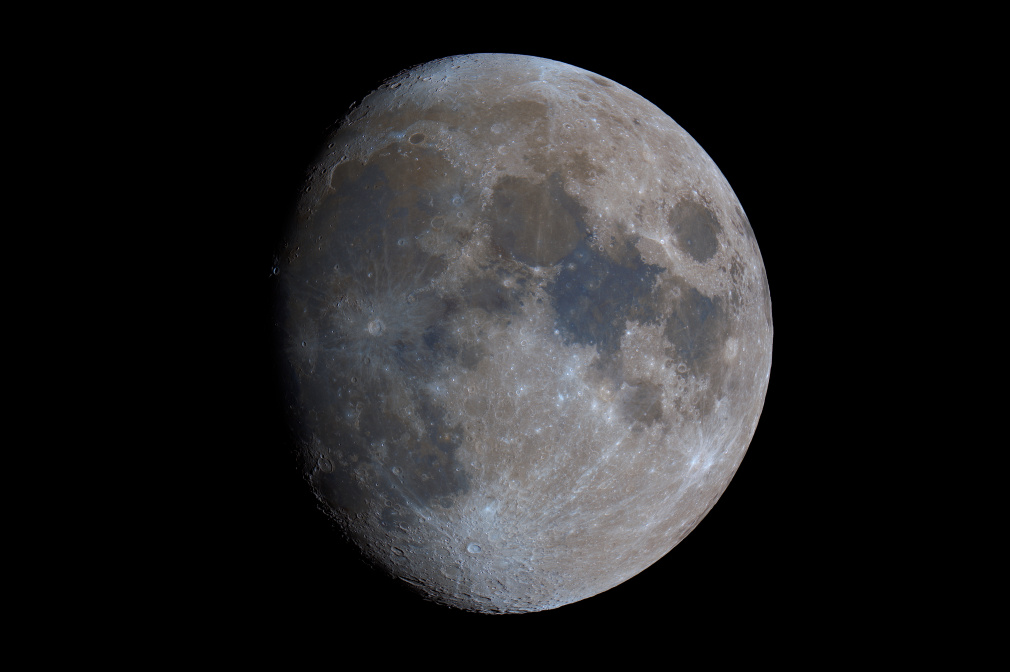Moon orbits Earth and also rotates around its own axis, the length of its orbital period and rotational period equals. This phenomenon is called synchronous rotation, and one of its consequence is that Moon turns the same face to Earth constantly, it is not possible to view the other side of Moon from Earth. Because Moon orbits Earth in a plane almost parallel to Earth's orbital plane around the Sun, the direction Moon gets the sunlight from is changing constantly. Depending on which part of Moon is lit the following cycle of lunar phases can be observed:
-
New Moon, when Moon is between Sun and Earth, and its opposite side from Earth is illuminated by Sun,
-
Waxing Crescent Moon
-
First quarter, when Moon is lit from west, and half of its disc visible from Earth is illuminated,
-
Waxing Gibbous Moon
-
Full Moon, when Earth is between Moon and Sun, and sunlight comes behind Earth illuminating the full disc of Moon visible from Earth,
-
Waning Gibbous Moon
-
Last quarter, when Moon is lit from east, and half of its disc visible from Earth is illuminated.
-
Waning Crescent Moon
This photo was taken right between First Quarter and Full Moon.
Moon has so thin atmosphere, it can be considered as non-existent, which is bad for lunar-astronauts as they have to wear protective suit on the surface of Moon that lets them breath and protect them against vacuum, radiation, temperature, etc, but it is good for lunar observers, because there are no clouds either that could obscure the surface. Lack of atmosphere has one other important effect: there is no erosion on Moon, apart from the ones caused by impact events, and moonquakes, so Moon's surface features are considered quite stable.
Many features can be observed even with the naked eye. The brighter regions are highlands, while darker spots are lower plains mainly filled with old solidified basaltic lava. The dark spots were thought to be seas, so they were named maria from Latin word for seas, and in contrast, brighter areas were called terrae (from Latin word for lands). In good seeing conditions even the largest craters can be observed without optical aid.
To spot smaller features, a telescope and good seeing conditions are needed. Even with a smaller telescope hundreds of impact craters, several mountain regions can be viewed. Larger amateur telescopes can show surface details as small as 1km in size, given the seeing conditions are exceptionally good.
Different colours in the picture indicate different amounts of iron and titanium content. Brownish areas contain a lot of iron oxide, while the bluish hue comes from titanium dioxide.
